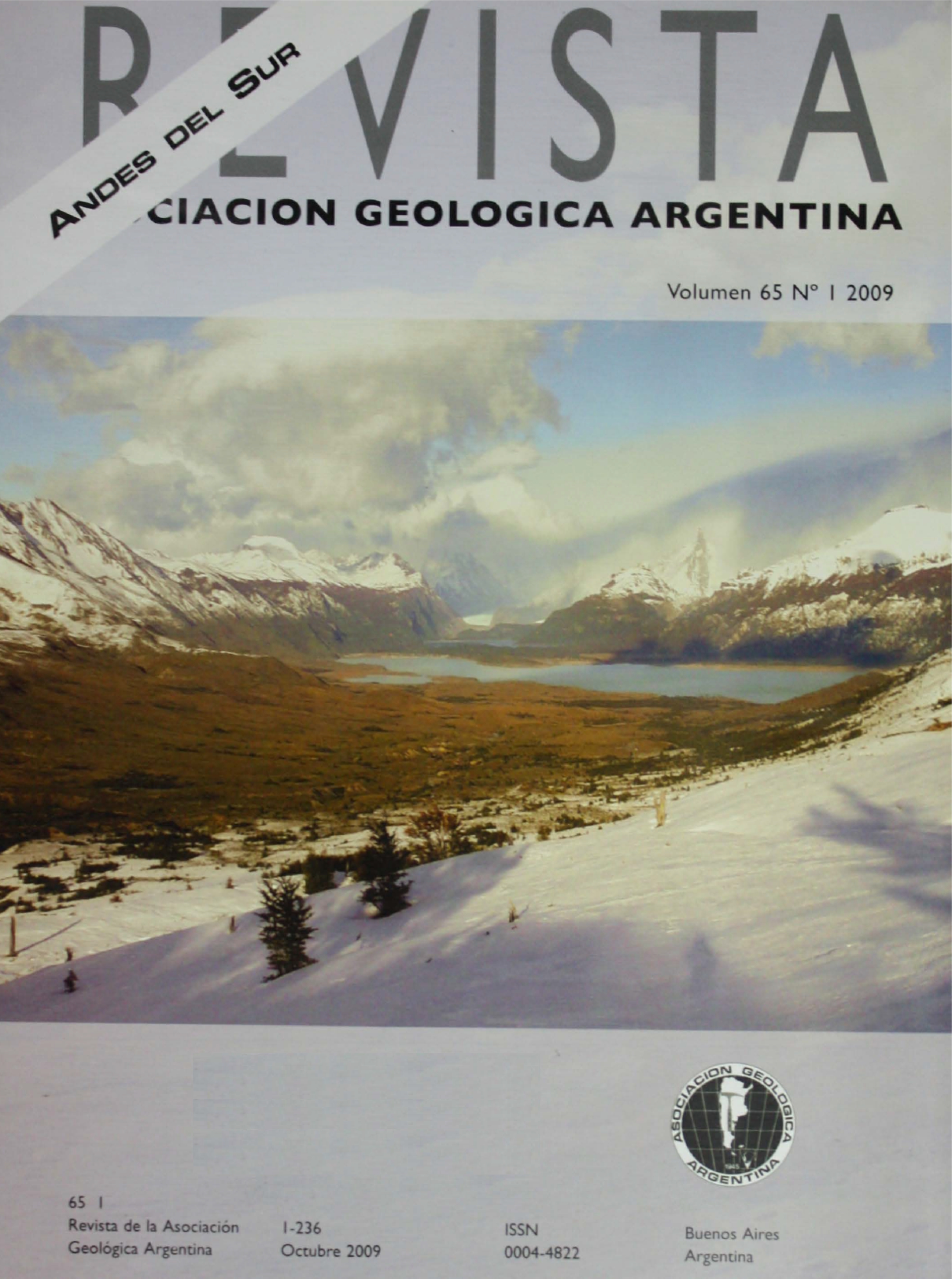Evolución tectónica del frente andino en Neuquén
Contenido principal del artículo
Resumen
La región preandina de Neuquén está conformada por una faja plegada fósil conocida como faja plegada y corrida del Agrio. La excelente calidad de sus afloramientos, los datos de subsuelo, junto con recientes edades radimétricas y nuevos datos de
trazas de fisión en apatita, han permitido reconstruir con bastante precisión la historia evolutiva de esta región. La estructuración de la región habría comenzado durante el Cretácico Superior, documentado por la presencia de diques basálticos de
rumbo E-O de ~100 Ma que se encuentran cortando la estructura de la zona interna. La deformación fue consecuencia de una leve horizontalización de la placa subducida que habría provocada la migración del arco volcánico hacia el antepaís. Éste
se habría instaurado en la región de Collipilli, en donde, recientemente se han obtenido edades de ~ 70 Ma para las Formaciones Collipilli y Cayanta. Estas unidades, se encuentran discordantes sobre la secuencia mesozoica, marcando así el
límite superior para el primer evento de deformación. Evidencias de esta deformación en la zona externa de la faja plegada se pueden observar en la discordancia del Grupo Neuquén sobre el Grupo Bajada del Agrio (Rayoso). A su vez, los nuevos datos de trazas de fisión en apatita en el dorso de los Chihuidos, indican una serie de eventos de enfriamiento/levantamiento, el
primero de ellos a los 70-50 Ma. El segundo en el Mioceno que produjo una reactivación de la deformación, evidenciada por los depósitos sinorogénicos del Conglomerado Tralalhué y las Formaciones Puesto Burgos y Rincón Bayo. Los nuevos datos de trazas de fisión en apatita, permiten interpretar otros dos eventos adicionales de levantamiento/enfriamiento entre los 11 y los 6 Ma en el dorso de los Chihuidos.
Detalles del artículo

Esta obra está bajo una licencia internacional Creative Commons Atribución-NoComercial 4.0.
Nota de copyright
Los autores conservan los derechos de autor y garantizan a la revista el derecho de ser la primera publicación del trabajo licenciado según una licencia de atribución Creative Commons que permite a otros compartir el trabajo con el reconocimiento de la autoría y de la publicación en la que se publicó por primera vez.
Declaración de privacidad
Los nombres y direcciones de correo electrónico introducidos en esta revista se usarán exclusivamente para los fines declarados por esta revista y no estarán disponibles para ningún otro propósito u otra persona.

